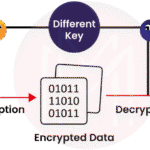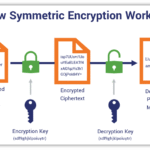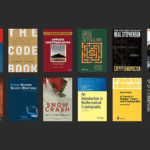The age of digitization has heralded an era where data is not merely a collection of bits and bytes, but a treasure trove that holds immense value. From personal information to state secrets, the security of this data is paramount. In the realm of data protection, unbreakable encryption has emerged as a mythical fortress, both revered and scrutinized. But is the concept of unbreakable encryption a remarkable reality or an enchanting illusion? To unravel this enigma, we must delve into the intricate tapestry of cryptographic science.
At its core, encryption is the art of transforming readable data into an incomprehensible format, effectively cloaking the information in a shroud of secrecy. This transformation occurs through algorithms, cryptographic techniques meticulously designed to obfuscate the content. Imagine encryption as a sophisticated lock on a vault that safeguards precious jewels — in this case, the jewels are sensitive pieces of information. The crux of the matter lies in the strength of the lock; some are easily compromised, while others present a formidable challenge to potential intruders.
Throughout history, cryptography has evolved from simple ciphers, such as the Caesar cipher, to complex systems that underpin modern digital communications. In today’s world, encryption techniques such as Advanced Encryption Standard (AES) and RSA are frequently employed. These algorithms operate on mathematical principles that define the capabilities and limitations of data security. Yet, there remains a tantalizing question: can these methods create an unbreakable code, a condition that would render any attempt at decryption futile?
To explore this notion further, it’s imperative to consider the concept of computational infeasibility. This principle posits that while a cipher may not be theoretically unbreakable, it can be deemed practically unbreakable due to the immense time and resources required to decode it. For example, AES-256 encryption, which utilizes a 256-bit key, is currently considered secure against brute-force attacks. Here, we enter the realm of scale: even with today’s computing power, deciphering such an encryption would take an unfathomable amount of time — longer than the age of the universe itself on a conventional computer.
However, the advent of quantum computing introduces a new variable into this equation. Quantum computers operate on the principles of quantum mechanics, allowing them to perform certain calculations exponentially faster than classical computers. This technological breakthrough casts a shadow over the foundations of current encryption protocols. A quantum computer equipped with Shor’s algorithm could effectively dismantle RSA encryption, a reality that has spurred researchers to hasten the development of quantum-resistant algorithms. The emergence of these algorithms represents a pivotal shift, indicating that while traditional encryption may approach unbreakability, it is not immune to the future’s advancements.
Yet, the narrative doesn’t end with quantum risks. The human element in the ecosystem of encryption must also be addressed. Social engineering, a method that exploits human vulnerabilities rather than computational weaknesses, poses a significant threat to data security. The strongest encryption can falter if individuals unwittingly disclose their passwords or keys. Even the most sophisticated vault can be breached if someone unwittingly provides the key. Thus, unbreakable encryption, when entwined with the realm of human error, transforms from an absolute to a conditional security measure.
Intriguingly, the philosophical aspects of unbreakable encryption cannot be overlooked. The notion of absolute security raises compelling questions about trust. In a world where all digital data is encrypted, how do we ensure the integrity of the encryption methods themselves? Trust in technology relies on transparency and the assurance that the methods employed are fundamentally sound. The spectrum of security expands further, leading to debates about backdoors for law enforcement and the potential compromise of encryption methods in the name of security. The duality of encryption as both a shield and a potential vulnerability adds layers of complexity to this narrative.
Another pivotal aspect within this discourse is the concept of entropy — the measure of randomness in cryptographic keys. Strong, unpredictable keys enhance the robustness of encryption. However, as data sets grow, the challenge lies in ensuring that key generation remains sufficiently random and unpredictable. The illusion of security can be shattered by systematic patterns in key generation, emphasizing the importance of employing robust methods for key management. In this respect, the science of unbreakable encryption requires constant reassessment and innovation.
Consequently, the quest for unbreakable encryption transitions from a mere technological ambition to a multi-dimensional challenge encompassing mathematics, computer science, human psychology, and ethics. It beckons researchers, cryptographers, and technology advocates to continuously engage in dialogue, to challenge assumptions, and to innovate relentlessly.
In conclusion, the pursuit of unbreakable encryption oscillates between the realms of fact and fiction. While current techniques may push the boundaries of what is considered unbreakable, advancements in technology, particularly from the quantum domain, keep the conversation dynamic. As we navigate this intricate landscape, we must remain vigilant, adapt to challenges, and recognize that the only constant in the realm of encryption is change itself. The journey toward unbreakable encryption is not a destination but an ongoing expedition filled with possibilities, challenges, and revelations — an eternal chase against the tides of time and technology.









Leave a Comment